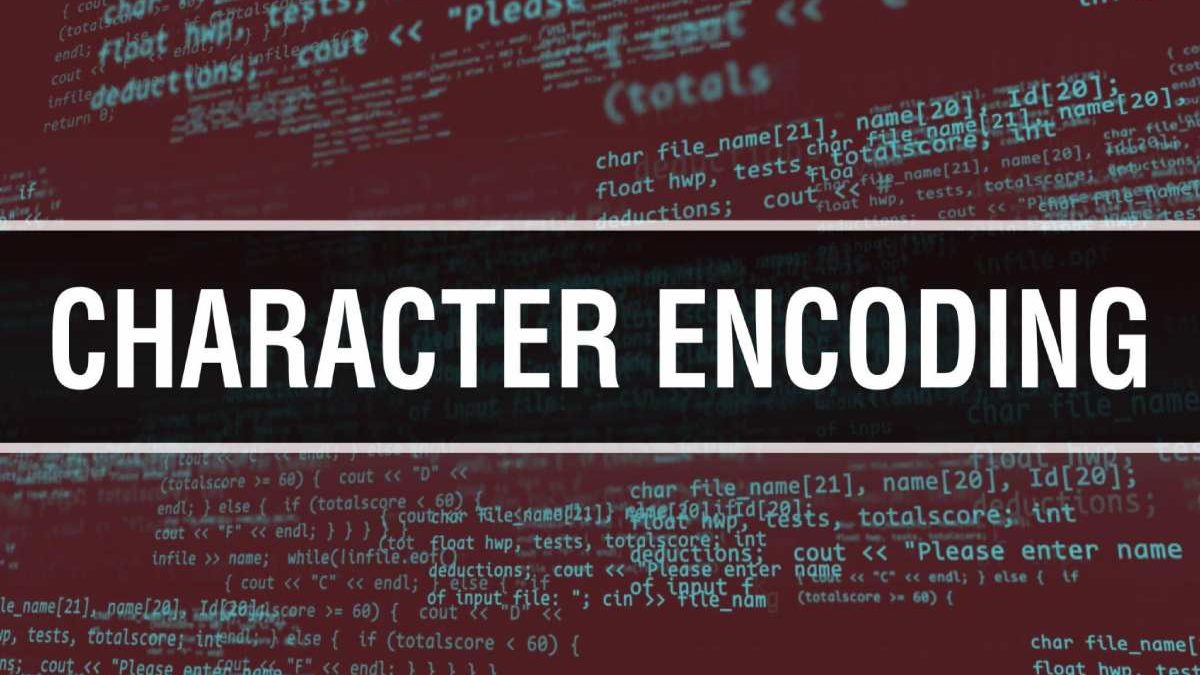ã˜â§ã˜â®ã˜â¨ã˜â§ã˜â± ã˜â¯ã™ë†ã™â€žã™å ã˜â© – In the realm of data management, character encoding plays an important role in ensuring that textual data remains intact and readable throughout its lifetime. However, inconsistencies in encoding can lead to inconsistent text or strange characters, a common anomaly that often deters developers. This article explores the complexities of character encoding, drawing insights from community experiences and discussions.
Table of Contents
Understanding the Core of Character Encoding
ã˜â§ã˜â®ã˜â¨ã˜â§ã˜â± ã˜â¯ã™ë†ã™â€žã™å ã˜â© Character encoding is a set of rules that map letters to numbers. It is the backbone that ensures that text remains readable when stored in a database, transferred between systems or presented on screens.
Importance of correct coding
- Data Integrity: Correct encoding preserves the unique text, ensuring data integrity.
- Readability: Ensures that text is readable when retrieved or displayed.
- Interoperability: Coding standards promote interoperability between different systems.
Common Encoding Standards

- ASCII: 7-bit character encoding standard representing 128 characters.
- ISO-8859-1: 8-bit character encoding standard representing 256 characters.
- UTF-8: A variable-width character encoding standard capable of encoding all possible characters or code ideas in Unicode.
The Phenomenon of Strange Characters
When ã˜â§ã˜â®ã˜â¨ã˜â§ã˜â± ã˜â¯ã™ë†ã™â€žã™å ã˜â© character encoding inconsistencies are found, they often appear as odd characters in text. This is a clear sign of coding inconsistencies during data handling.
Common Scenarios
- Database storage: Incorrect encoding settings in the database can cause text to be stored incorrectly.
- Data transmission: Inconsistencies in encoding during data transmission can corrupt text.
- Rendering: Incorrect encoding at the rendering stage can result in strange characters on the screen.
Decoding the Query
ã˜â§ã˜â®ã˜â¨ã˜â§ã˜â± ã˜â¯ã™ë†ã™â€žã™å ã˜â© highlights a common scenario where strange and Poor characters appear. In database text, UTF-8 suggests a possible conflict between encoding and decoding.
Community perspectives
The community suggests that at some point in the process of handling text data, a mismatch in UTF-8 encoding and decoding may be responsible.
Practical implications
This real-world example illustrates the importance of ensuring coding consistency at all stages of data handling.
Strategies For Tackling Encoding Mismatches
Addressing coding discrepancies requires a deep understanding of the coding process and a methodology for identifying and correcting problems.
Database Configuration
- Check encoding settings: Make sure the database is configured to use the correct character encoding.
- Use Unicode: If possible, use a Unicode encoding such as UTF-8 to accommodate a wider range of characters.
Data Transmission
- Specify encoding: When transferring data, specify the encoding that is used to avoid inconsistencies.
- Validation: Validate the encoding at both ends of the transmission to ensure continuity.
Rendering
- Meta tags: Use meta tags to define character encoding in HTML documents.
- Content-Type Header: Specify the character encoding in the Content-Type header.
Frequently Asked Questions
Are Certain Databases More Prone To Character Encoding Issues?
Encoding problems can occur in any database if the character encoding settings are not configured correctly or are handled inconsistently. However, the ease of configuring and managing encryption settings may vary for different database systems.
Can Encoding Mismatches Cause Data Loss Or Corruption?
Yes, encoding inconsistencies can cause data corruption, especially if text data is incorrectly decoded or re-encoded using a different character encoding standard. Resolving encryption issues promptly is critical to preventing data loss and ensuring data integrity.
How Can I Identify The Character Encoding Use To Store Text In My Database?
Most database systems provide variables or metadata queries that can be use to verify character encoding settings. You can also use database administration tools or consult your database system’s documentation to learn how to verify and change character encoding settings.
Conclusion
Text data may seem as odd characters in irritating situations due to inconsistent character encoding. Developers may guarantee data integrity, readability, and smooth system interoperability by grasping the principles of character encoding and adopting a methodical approach to finding and resolving encoding issues.
Also Read: What is Business Education?

